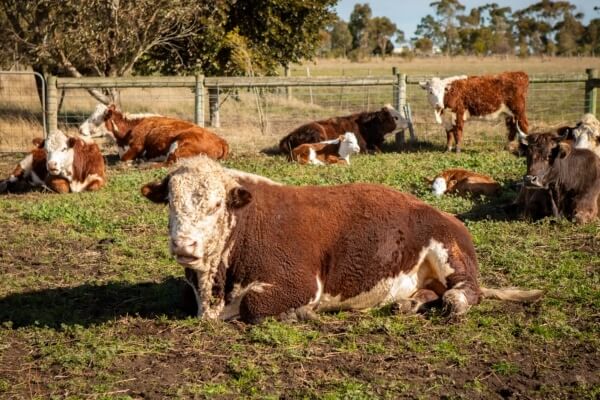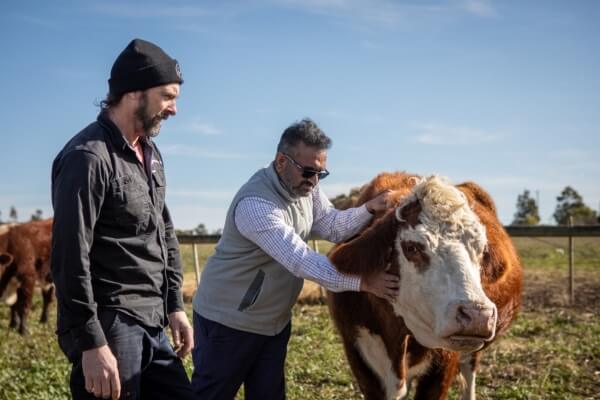“We are going to face a situation in the world, where we could run out of antibiotics,” warns RMIT University’s Professor Rajaraman Eri in a YouTube video.
“When that happens, superbugs will wreak havoc, and we will be unable to treat infections,” he adds, emphasising the escalating global threat of antimicrobial resistance (AMR).
Anti-Microbial Resistance is a biological phenomenon where microorganisms become resistant to drugs.
As the world recovers from one pandemic, scientists are warning that another crisis may be looming — this time, emerging from the animals we consume. A recent study from RMIT University researchers highlights the growing danger of AMR in livestock, which has the potential to spawn deadly superbugs resistant to antibiotics. If this issue is not addressed, it could result in millions of deaths worldwide by 2050, the World Health Organisation (WHO) estimates.
In an article titled Addressing Residue and Resistance in Food Animals: A Policy Imperative in Southeast Asia, bioscientist Professor Eri, microbiologist Dr Charmaine Lloyd from RMIT, and public policy expert Dr Pushpanathan Sundram from Thailand, shed light on the food animal industry’s role in the rise of AMR, particularly in Southeast Asia. The study, published in the International Journal of Food Science and Technology, also examines the urgent need for policy reform to combat this growing threat.
Watch what you eat
AMR hotspots can be found across the globe, particularly in regions where antibiotics are used indiscriminately, or where regulations fail to effectively manage antibiotic residues in livestock and waste systems.
Residues are basically remnants of drugs in animal tissues after exposure, which can be ingested by humans and lead to health complications. Resistance, on the other hand, occurs when bacteria adapt and survive despite antibiotic treatment.
A key point in the RMIT study is the need to differentiate between antimicrobial residue and resistance.
“Resistance is harbouring the resistant bugs in the system. They won’t respond to treatment with some or any antibiotics. AMR directly affects the ability to treat infections, whereas residues primarily concern food safety and consumer health,” Prof Eri explains. “Residues are parts of the antibiotic that stays in animal organs. So, when the animal product is consumed for food, one is indirectly eating the antibiotics with the animal product.”
How does this threat affect countries like India and Australia?
“These countries can be affected due to the nature of international travellers, immigrants and students arriving. While Australia is generally seen as a world-leader in antibiotic stewardship (controlling how antibiotics are dispensed), India still is aiming to place strict controls on antibiotic dispensing in both human and veterinary sides,” Prof Eri explains. “In addition, hotspots or drug-resistant tuberculosis exist in India. So, if a person is carrying an antibiotic-resistant organism, they can transmit it to others in the community.”
Eri has highlighted the primary challenges faced by Southeast Asian countries in regulating antimicrobial use in food animals. These include too many small farmers with poor knowledge about AMR and ill effects of AMR, indiscriminate dispensing of antibiotics by chemists/pharmacies, poorly managed waste disposal systems in farms, not testing for AMR in water/waste sources by public health authorities, lack of public education about AMR, among others.

The overuse and misuse of antimicrobial drugs, especially for growth promotion in healthy animals, have resulted in the increased rate of resistance, says Lloyd from RMIT’s School of Science.
Prof Eri shares multiple ways in which the overuse of antibiotics in animal farming could lead to the development of AMR.
Selective Pressure: When antibiotics are used extensively in animals, they create a selective environment where only those bacteria that have or acquire resistance mechanisms can survive and proliferate.
Horizontal Gene Transfer: Antibiotics can promote the transfer of resistance genes between bacteria. antimicrobial resistance
Sub-optimal dosing: This low-level exposure of antibiotics does not kill bacteria but instead encourages the development of resistance by allowing bacteria to adapt to the presence of the drug.
Environmental contamination: Water and waste systems could become loaded with disposed antibiotics.
Animal to human transmission: AMR could be transmitted to humans through the consumption of contaminated meat, direct contact with animals, or through the environment.

Looking ahead
Currently AMR is not a big concern in Australia, as it does not import large quantities of animal products, says Prof Eri. However, regular testing for antimicrobial residues in imported and local animal products is essential, he notes.
To mitigate the risk, the researchers outline six key recommendations for policymakers:
- Recognise the difference between residue and resistance to tailor interventions.
- Foster regional collaboration to address disease outbreaks and resistance.
- Launch awareness campaigns and ensure robust surveillance of antimicrobial use.
- Strengthen global cooperation to combat resistance on a large scale.
- Bolster public health systems to prepare for the growing AMR threat.
- Promote research into alternative antimicrobial solutions and sustainable farming practices.
“We suggested a ‘one-health’ approach where the human, veterinary, agriculture sides sit on one table and discuss AMR rather than as individual entities,” says Prof Eri. “In terms of India, the Modi-led government has formed a panel to address this issue and hopefully, they can bring about stricter regulations surrounding AMR.”
Above all, public education about AMR is an important aspect that needs to be better implemented.
Scandinavian countries, particularly Sweden, are setting the standard in antimicrobial regulation.
“Sweden pioneered AMR combat with their antimicrobial stewardship program that emphasises judicious antibiotic use in both human healthcare and agriculture,” Prof Eri describes. “Sweden’s public awareness campaign for decades has resulted in one of the lowest rates of antibiotic consumption in Europe in addition to strong surveillance programs.”
READ ALSO: Osteoarthritis: How to avoid surgery for knee pain




